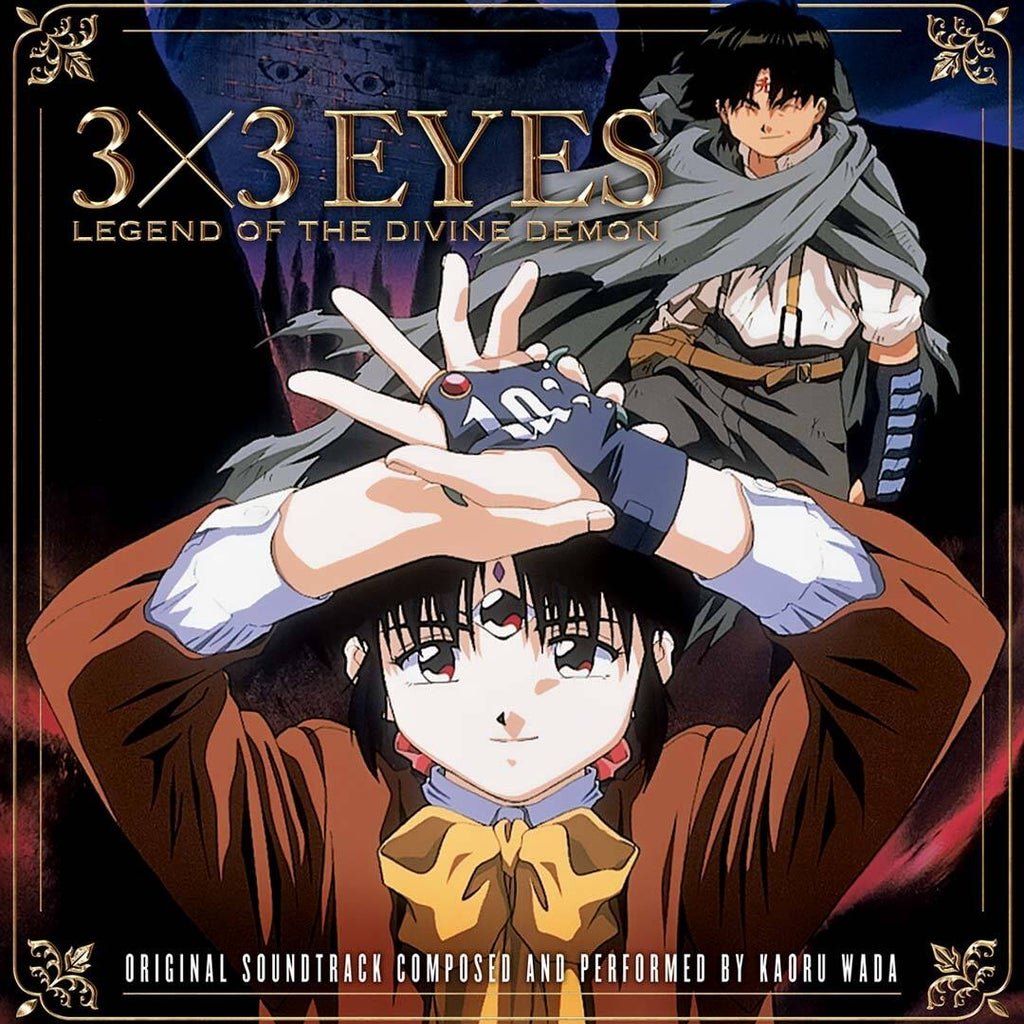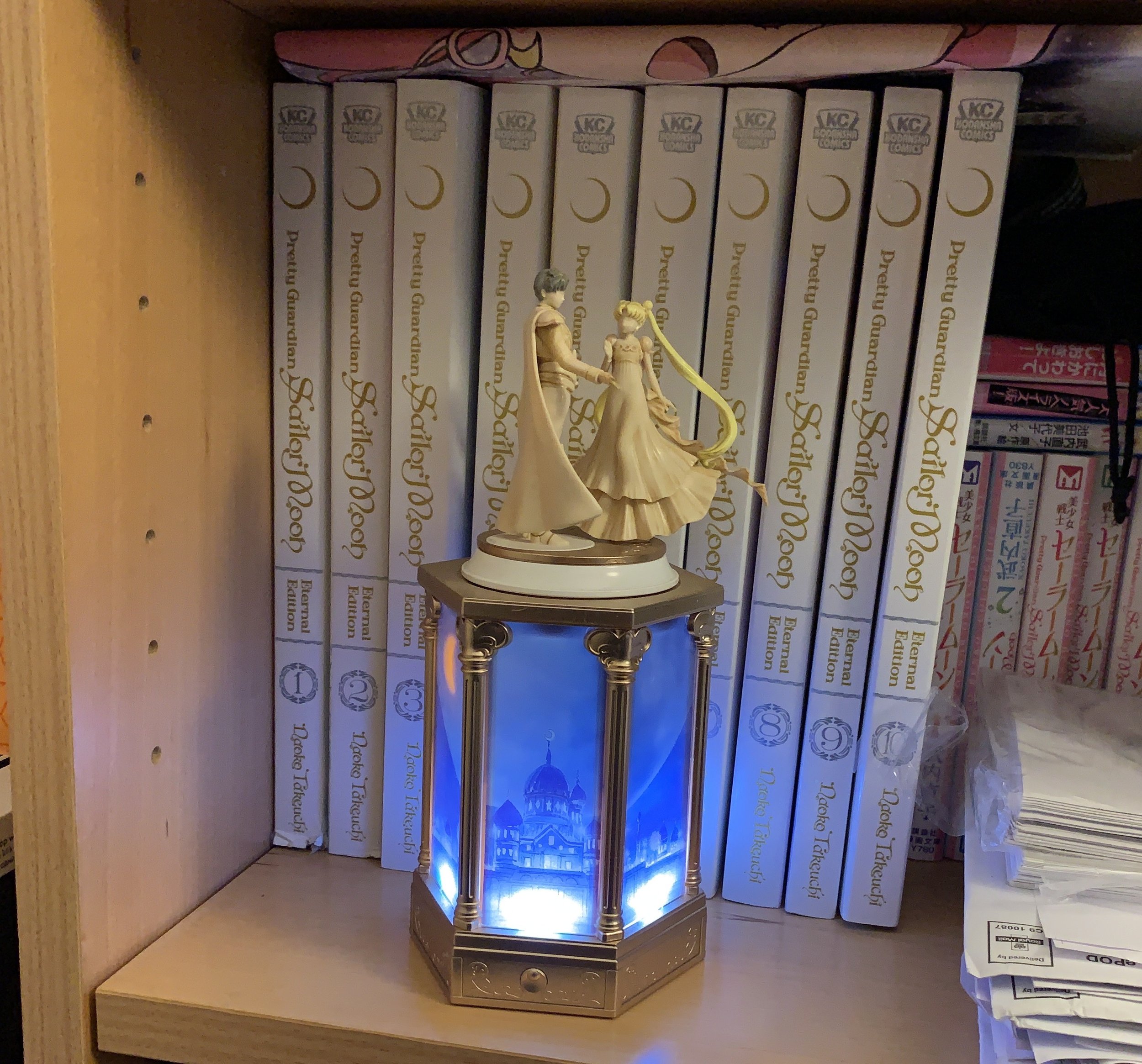A Life in Anime and Manga
I’m one of the oldest members of my cohort, I’m also the only one to have not only grown up with anime and manga before they were cool and mainstream in the UK but also worked in the industry, as both a journalist and, more recently, as a manga adaptor and editor.
So let’s talk about the series, films and books which shaped me.
Laputa/天空の城ラピュタ
Imagine for a moment, it’s Christmas in 1988, there are only four TV channels and you turn on the TV to catch the start of a strange animated film which definitely isn’t Disney. The closest thing to what I watched in terms of style was The Last Unicorn… (and for good reason).
But the musical is beautiful, the storyline captivating and there is a strange girl with a magic stone that allows her to float. Oh and it’s steampunk long before that designation is even created.
This was how I discovered Studio Ghibli but it wasn’t until the internet (thank you Nausicaa.net!) and my time at university, also eBay, that I was able to locate a VHS and then, later, the official Japanese DVD release which had both the Japanese audio but also the original English version, which was only ever supposed to be shown on international flights.
Laputa remains my ultimate favourite Ghibli movie, beyond Spirited Away and Princess Mononoke… My favourite part is the discovery of the stones with Uncle Pom, between chase sequences, where the music swells and both Sheeta and Pazu are in awe of the power of Sheeta’s crystal on the local rock.
And yes, in 2010, on my first trip to Japan, I did indeed go to Mitaka and have photo taken next to the giant robot on the Museum’s roof, as well as closely examining the Laputian block nearby.
3x3 £yes/サザンアイズ
I must have been twelve or so (I’m 41 now…) when we visited the Lakeside Shopping Centre at Thurrock and rather than computer games, I was transfixed by wall of animated VHS tapes, most of which had 18 certificates and the logo of a much loved and missed Manga Entertainment.
© Manga Entertainment
One, in particular, caught my eye: the image on this blog’s header, from the OVA series 3x3 Eyes. I couldn’t find original VHS cover, so this high rez variant of the vinyl OST will have to do. That said, I had to wait a couple of years and stay up til 4am to watch it on Channel 4 but the series had me hooked!
Edit: Here’s a smaller version I was able to find.
There was violence and mysticism and people with three eyes! The title actually refers to the number if Sanjiyan Unkara (Pai’s race) it takes to turn one of them human. At the same time, the exposition had some fascinating ties to Hinduism and Tibetan Buddhism. Plus doesn’t Pai just look cool in that cover are?
I keep waiting for a reboot of the series in animated form, there were whispers of one back in 2015 but nothing ever seems to have happened, sadly.
Sailor Moon/美少女戦士セーラームーン
I confess I started the manga before ever seeing the anime. I was lucky enough to discover a now-famous comic book shop in Richmond, a few towns away from my university in Twickenham. At this point, I was knee-deep in Japanese horror and starting to become fascinated by this medium I didn’t even know I loved. This was right at the point where anime was getting a second wind and manga was the Next Big Thing™. I started picking up the single chapter issues around the time Stars was published by Tokyopop. Then, as Amazon expanded, I started getting the collected volumes.
As with Laputa and 3x3 Eyes, it was the art style and the magic of the series. I became fascinated with the mythology of the series, the legend of the Moon Kingdom and the Silver Millennium and, even to this day, Peincess/Neo-Queen Serenity remains my favourite character. Not Usagi, not Sailor Moon, no, Serenity.
This was also the point where I started using the nascent internet to download episodes (which took like four hours) in my uni’s IT lab, as well as visiting the much-missed branch of the Asahiya Shoten bookstore, which used to be at Oriental City in Colindale. Everyone else spent their student loan on beer, mine went to books, including my first kanji dictionary, and Newtype. I adored that bookshop;' I could pick up the volumes in Japanese and kept them in my apron pockets while I was working at the uni’s refectory. Using my down time to read them and quietly puzzle out the Japanese scripts.
The series hit its thirtieth anniversary this year and in 2021, we had Sailor Moon: Eternal released on Netflix. There are new musicals and collaborations, events and even theme park rides. Sailor Moon isn’t going anywhere.
©2022 Asha Bardon
Chobits/ちょびっツ
I was lucky enough to have colleague who started teaching me Japanese phrases and I soon found my way into a thriving community of people who found ways around getting anime digitally. From there, I chased series I loved, using all the different magazines to track beautiful but dark series like Haibane Renmei. Eventually I found CLAMP and, from there, fell in love with X and, of course, Chobits.
For me it was the music and the art style, also the slight risquéness of what was an anime but also had adult ideations. Nothing hentai but still dealing with adult subjects. It also taught me so much about Japan and the day-to-day life of average people, albeit in a sci fi context. Chobits was also the first manga I bought as it was released, both in Japanese but also in right-to-left formatted English, which was becoming fashionable around this point.
Apparently about authenticity, I think it was just easier on the letterers…
AIR
Visual novels adaptions were a thing in the mid-2000s’, with KyoAni adapting Air, Clannad and Kanon amongst others. Then there was the Fate franchise and Tsukihime… AIR was my first and my favourite. I still watch it every summer and it isn’t perfect but it is the anime which best sums up the season. Also it’s being released, finally, in the UK this year!
Visual novels, usually PC releases, are usually known for their ‘adult’ content, usually bonus sex scenes between the protagonist and the various female heroines. Now a days, the Switch and Playstation releases are usually CERO A, or for all ages, so the scenes have been removed. AIR deals with some dark content, from suicide attempts and terminal illness to full on curses, death and murder. But it’s also a story about a boy, the winged girl he seeks across lives and summers, and the girl who remembers she had wings but is cursed to die over and over again, before they can be properly reincarnated.
This is about the time when I was beginning my career as a freelance journalist, writing for NEO, SFX, its anime-special issues and, eventually, the short-lived Newtype USA. I never stopped consuming anime but I also got this place in the liminal space between the industry, its publishers and readers.
Puella Magi Madoka Magica/魔法少女まどか☆マギカ
© 2011-2022 Shaft
It always feels weird when I remember Madoka is over ten years old now.
I’d just come back from Japan and wanted something different… something dark. Madoka is all that and more. It’s frequently called a ‘deconstruction’ of the magical genre but it does still share something with the bare bones of all the series before it, Sailor Moon in particular. Madoka, like Usagi, begins as just normal girl but ends up as a defacto goddess (named ‘Madokami’ by her fans around the world), the epitome of selfless hope in an uncertain world.
The movies took a twelve epiaode series and turned it into a phenomenon. Rebellion almost won an Oscar! And, after years of patience, and a spin off series (Magia Record, which I love almost as much) a fourth movie is on its way!
Given the light-hearted opening and the cuteness of Kyūbey, the series goes to the Dark Side pretty quickly, with Sayaka’s arc and then the revelation of Homura’s timeloop. (Also I completely ship Sayaka and Kyoko). The final episode, where Madoka makes her wish and becomes a concept beyond good and evil, witches and magical girls, that’s the one I go to. Rebellion continues the story and then Magia Record takes it to a whole other parallel universe… I played the mobile game extensively and it was so exciting to gradually see the Holy Quintet appear before Ultimate Madoka herself. It makes me so excited to return to their story with Walpurgisnacht: Rising.
Your Name.
Who doesn’t love Your Name? It remains up there for me, the pitch perfect melding of Shinto and the natural world, beautiful visuals and an enchanting love story that not even time itself could stop.
The plot caught me and the visuals did the rest. After, Your Name, I felt hard for Shinkai Makoto, so much so I named Tate’s emotional support kitten after Ame from Tenki no Ko. I bought the novel and devoured it, I got the special edition Blu Ray (which ComixWave released region free!!!!P) and then devoured the three volume manga, and its two volume spin-off.
Your Name might seem simple but it is gorgeous, both in plotting and the visuals. Heck, it’s my go to desktop wallpaper of Tokyo changing from day to night. I was so happen, when just before COVID rocked the UK, I was able to see a double bill of both Your Name and Tenki no Ko, and see both as they were intended: subtitled and on a movie screen. I never get tired of either film, frankly, and I’m pretty sure if I end my MA in Interdisciplinary Japanese Studies without writing something on Shinkai Makoto’s body of work, then I will have done something wrong.
It sometimes feels odd when series have anniversaries and I remember how old I was when I encountered them, my childhood was pock-marked by so many series which left marks behind for all the right reasons. These are just some of the important ones and I always love adding to this list as more series come out which mean something or change my perspective in some way.





